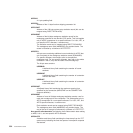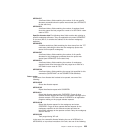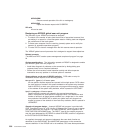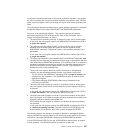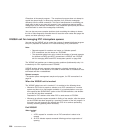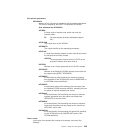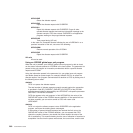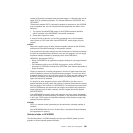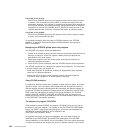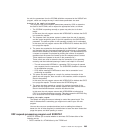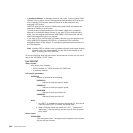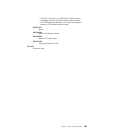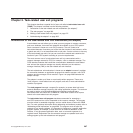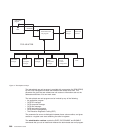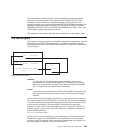ISR_XISQUE_ALLOC_REJECTS
Each time an XISQUE global user exit program returns with a request to reject
a request, CICS increments this field, which is provided to help you tune the
queue limit. Normally, if the number of sessions and the queue limit specified on
the IPCONN definition are correctly balanced, and there has been no abnormal
congestion on the link, ISR_XISQUE_ALLOC_REJECTS should be zero. If the
rejected allocates field is non-zero it indicates that action is probably needed.
ISR_XISQUE_ALLOC_QPURGES
Each time an XISQUE global user exit program returns with a request to purge
a queue, CICS increments this field.
For detailed information about the fields in IPCONN statistics, see “IPCONN
statistics”, in the CICS Performance Guide. IPCONN statistics are mapped by
DSECT DFHISRDS.
Designing an XISQUE global user exit program
Your XISQUE exit program should be designed to:
1. Control of the number of tasks (and the amount of associated resource) that are
waiting in a queue for a free IPIC session. Waiting tasks can degrade the
performance of the local system.
2. Detect poor response from the remote system and notify the operator (or
automatic operations program).
3. Cause CICS to issue a message when the IPCONN resumes normal operation.
The XISQUE parameter list is designed to support these objectives. The information
it contains enables your exit program to:
v Avoid false diagnosis of connection problems by distinguishing poor response
times from a complete bottleneck
v Ensure that a link resumes normal operation quickly and without operator
intervention after a problem in a remote system is resolved
Using IPCONN statistics
In reaching its decisions about which requests to reject, which to queue, and which
queues to purge, your exit program will probably take into account the number of
allocate requests currently queued against the connection. All allocate requests for
a particular IPCONN are queued in a single queue that is specific to that IPCONN.
CICS makes the total number of entries in this queue available in the IPCONN
statistics field ISR_CURRENT_QUEUED_ALLOCATES. Your exit program can
access this field by means of the address of the IPCONN statistics, which is passed
in the UEPCONST exit-specific parameter.
The sample exit program, DFH$XISQ
CICS provides a sample XISQUE exit program, DFH$XISQ, that you can use as
the basis for your own program. It is supplied in the CICSTS32.CICS.SDFHSAMP
library. The DSECT used by the sample program to map the area addressed by
UEPISDATA is called DFHXIQDS, and is supplied in the
CICSTS32.CICS.SDFHMAC library.
As supplied, the sample exit program implements the same basic function as
described for the QUEUELIMIT and MAXQTIME parameters of the IPCONN
resource definition. If the XISQUE exit is not enabled, CICS uses these parameters
to control the existence and length of the queue of allocate requests. If you enable
262 Customization Guide



